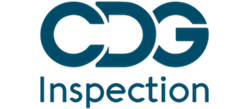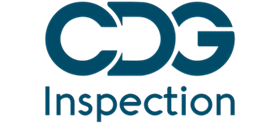Introduction
In the realm of pharmaceutical and medicinal product manufacturing, ensuring patient safety and product efficacy is of paramount importance. To achieve these goals, regulatory agencies across the globe have established stringent guidelines and standards that manufacturers must adhere to. One such set of regulations is the European Union Good Manufacturing Practice (EU GMP) guidelines, which provide a framework for ensuring the quality, safety, and efficacy of medicinal products. Central to the implementation of these guidelines are EU GMP audits, which play a critical role in verifying and enforcing adherence to quality control and testing procedures in pharmaceutical manufacturing.
EU GMP Guidelines: A Framework for Quality
The EU GMP guidelines are a comprehensive set of regulations aimed at ensuring that medicinal products are consistently produced and controlled according to high quality standards. These guidelines cover a wide range of aspects, including facilities, equipment, personnel, documentation, production processes, quality control, and testing procedures. Adherence to these guidelines is essential to minimize the risks associated with product variability, contamination, and ultimately, patient harm.
The Role of EU GMP Audits
EU GMP audits serve as a cornerstone of the quality assurance process in pharmaceutical manufacturing. These audits involve systematic, independent assessments of manufacturing facilities, processes, procedures, and documentation to ensure compliance with the EU GMP guidelines. The audits are conducted by regulatory agencies or qualified third-party auditors, and their primary goal is to verify the consistency, reliability, and effectiveness of quality control and testing procedures.
Verification of Adherence to Quality Control Procedures
Quality control procedures are crucial for ensuring that the manufactured medicinal products meet the predefined quality standards. EU GMP audits play a vital role in verifying the implementation and effectiveness of these procedures. Auditors review documentation related to quality control, such as batch records, stability data, and analytical test results, to assess whether they are in line with the established guidelines. Any deviations or non-conformities are identified and documented, triggering corrective and preventive actions to address them. By rigorously assessing quality control procedures, audits help prevent defective or substandard products from reaching patients.
Validation of Testing Procedures
Testing procedures are at the heart of quality assurance in pharmaceutical manufacturing. They encompass a range of analytical and microbiological tests that ensure the identity, purity, potency, and safety of medicinal products. EU GMP audits focus on validating these testing procedures to ensure their accuracy and reliability. Auditors review the validation protocols, test methods, equipment calibration records, and personnel training documentation to confirm that the testing procedures are scientifically sound and capable of producing accurate and consistent results. This verification process is essential to prevent false-positive or false-negative results, which could have serious consequences for patient health.
Personnel Training and Competency
Skilled and knowledgeable personnel are essential for maintaining the integrity of quality control and testing procedures. EU GMP audits assess the training programs and competencies of personnel involved in various stages of pharmaceutical manufacturing. This evaluation ensures that employees are adequately trained to perform their tasks, understand the importance of following procedures, and are aware of potential risks associated with deviations. Personnel training verification is not only about the technical aspects of testing; it also covers aspects of data integrity, documentation practices, and adherence to ethical standards.
Data Integrity and Documentation
The accuracy and integrity of data and documentation are critical in pharmaceutical manufacturing to provide an auditable trail of the product’s journey from raw materials to the final product. EU GMP audits scrutinize data integrity practices and documentation systems to ensure that records are complete, accurate, and traceable. This is particularly important for regulatory compliance and to prevent data manipulation or falsification. The audits verify that records are securely stored, easily retrievable, and maintained throughout the product lifecycle.
Supply Chain Oversight
Pharmaceutical manufacturing often involves complex supply chains with multiple suppliers and subcontractors. The integrity of the final product is only as strong as the weakest link in this chain. EU GMP audits extend their scope to assess the quality and reliability of materials and components supplied by external partners. These audits ensure that suppliers and subcontractors adhere to similar quality control and testing standards as outlined in the EU GMP guidelines. This supply chain oversight helps minimize the risks of contamination, adulteration, or substandard materials entering the manufacturing process.
Continuous Improvement and Risk Management
EU GMP audits not only focus on current adherence to quality control and testing procedures but also contribute to continuous improvement and risk management. Auditors provide recommendations based on their findings, suggesting areas for enhancement and optimization. These recommendations may involve adopting new technologies, refining procedures, or strengthening quality control measures. Additionally, audits help manufacturers identify potential risks and vulnerabilities in their processes, allowing them to proactively implement risk mitigation strategies and prevent future issues.
Impact on Regulatory Compliance and Market Access
Adherence to EU GMP guidelines and successful audit outcomes are prerequisites for regulatory compliance and market access in the European Union and many other countries that recognize the EU’s standards. A positive audit outcome signifies that the manufacturer is consistently producing safe, effective, and high-quality medicinal products. Regulatory agencies use audit results to make informed decisions regarding product approvals, renewals, and post-marketing surveillance. Non-compliance or poor audit results can lead to regulatory actions, including warning letters, fines, or even suspension of manufacturing licenses, which can significantly impact a manufacturer’s reputation and business operations.
Conclusion
In the world of pharmaceutical manufacturing, where patient safety and product quality are non-negotiable, the EU GMP guidelines and their associated audits serve as vital mechanisms for ensuring adherence to quality control and testing procedures. These audits provide an independent and systematic evaluation of manufacturing processes, facilities, personnel, and documentation to verify compliance with the guidelines. By rigorously assessing every aspect of quality control and testing, audits play a crucial role in preventing defects, ensuring data integrity, and minimizing the risks associated with substandard or contaminated products. Furthermore, these audits promote continuous improvement, risk management, and regulatory compliance, making them an essential component of the pharmaceutical quality assurance ecosystem.





